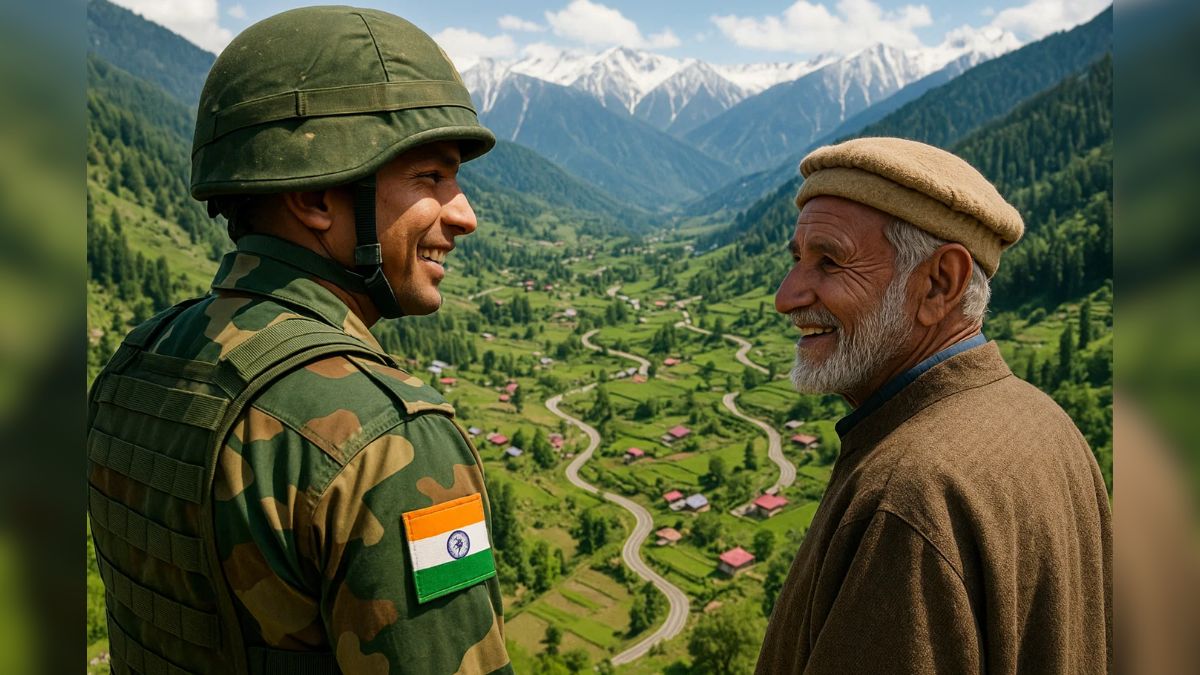In recent days, Indian Army’s counter-terror operations in Kashmir have intensified. In Kupwara, along the Line of Control, two terrorists were killed after Indian security forces foiled an infiltration bid.
In the Samba district, search operations were launched after Pakistani drones were spotted near forward villages, prompting concerns of surveillance or smuggling.
The State Investigation Agency (SIA) has also conducted raids in eight locations across seven districts of Jammu & Kashmir targeting alleged sleeper-cell networks believed to be functioning under the direction of proscribed militant organisations.
How are these operations protecting Kashmir against external threats and internal insurgency?
The Army’s role in countering external aggression, whether from across the LoC or via technological intrusions such as drones, remains central. The Kupwara incident of October 14, 2025 is a reminder that infiltration attempts are still a live concern.
The Samba drone sightings suggest that border surveillance is not merely about guarding territory, but also preventing asymmetric threats: smuggling, terrorism funding, intelligence gathering.
Internally, sleeper-cell networks (for example, those allegedly active across several districts and reportedly tied to Lashkar-e-Taiba and Jaish-e-Mohammad) point to layered threats, not only armed militants but civilian support structures.
These operations are challenging: Kashmir’s terrain, with its forests, mountains, unpredictable weather, all make intelligence gathering, mobility, and sustaining operational readiness difficult. But they also underscore how the Army’s constant presence in remote areas, i.e. forward posts, combing operations, supply logistics, matters. Without these, militant or infiltrator safe havens would more easily reemerge, and civil governance would be more fragile.
In what ways is infrastructure enabling both defence readiness and civilian life?
The Army’s engineering wings and linked organisations like the Border Roads Organisation (BRO) have, historically, built and maintained roads, bridges, forward outposts in some of the harshest terrain in Jammu & Kashmir. These help ensure consistent supply lines, mobility for troops, and access for civilians to markets, schools, and medical facilities.
The freight train to Anantnag means that the same rail link that ensures winter supplies for remote posts also helps farmers avoid losses when road access is blocked. When highways are cut off by snow or landslides, the train becomes a lifeline.
Infrastructure also supports strategic defence: outposts, surveillance, movement of forces and materials — all require reliable connectivity.
What does all this suggest about Kashmir’s trajectory?
The current phase in Kashmir shows a blending of functions: security, infrastructure, development. The Army is increasingly part of the environment that shapes civilian life — through logistics, schools, roads, and helping maintain civilian administration. However, whether this leads to long-term stability depends on consistency: consistent governance, consistent economic opportunity, credible intelligence and security operations, and civilian trust.
If the logistics breakthroughs and security raids are sustained, they could enable a more predictable life for people in remote valleys. But any gains risk being fragile: setbacks in employment, breakdowns in law and order, or failures in infrastructure could undercut the promise.
Kashmir’s story at the moment is not of a region recovering entirely, nor one locked in perpetual crisis, but of a sensitive balance. Security forces still bear the burden of defence and counter-insurgency; infrastructural breakthroughs are opening possibility; development schemes are trying to address real needs. The pressing question is whether the institutions on the ground—civil, military, community—can sustain the momentum.
